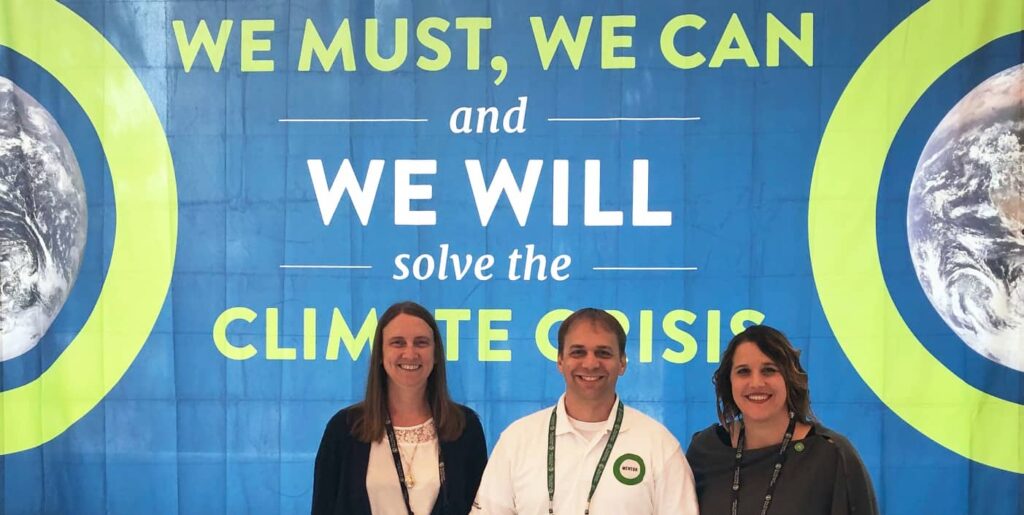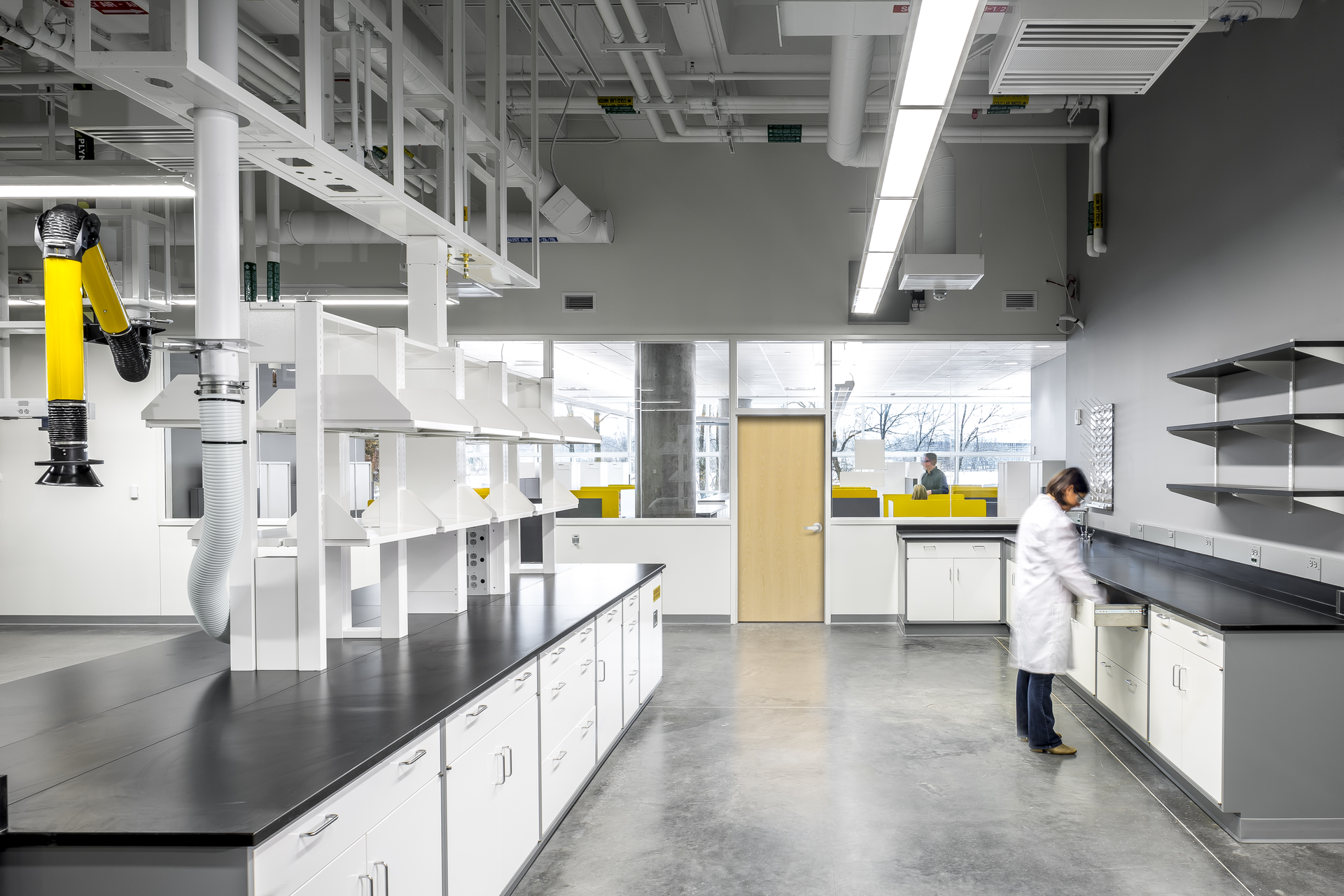“The time for incremental change is over. The urgency for change is upon us.”
When Minnesota Gov. Tim Walz made this announcement at the recent Climate Reality Leadership Corps training in Minneapolis, the words swept through the arena, more like a tailwind than a headwind. On an August weekend in a summer that has been filled with stories of record breaking wet Midwestern weather, heat in Alaska and Europe, drought-driven wildfires in Siberia, sunlit floods in Miami, and accelerated deforestation in the Amazon, event-goers readily supported the need for urgency.
We, too, are firsthand witnesses turned activists. Supported by our coworkers, families, and communities, our attendance at the Climate Reality Project training gave us the tools to ask the right questions, take the right actions, and ultimately help change the world.
Founded by Nobel Laureate and former Vice President, Al Gore, the Climate Reality Project is a non-profit organization dedicated to spreading information about and solutions to the Climate Crisis. Currently there are over 20,000 Climate Reality Leaders in over 170 countries.
Our fellow Climate Reality Leaders at the Minneapolis training included approximately 1,200 people from 46 states and 30 different countries, representing a cross-section of industries, businesses, and demographics. The people donating one of their summer weekends to attend this training had already demonstrated their interest in the effects of climate change. However, the training’s overarching energy went one step further, galvanizing action rather than merely discussions about solutions.
What does it take to get stakeholders to envision something different?
Local, regional, and global conversations on climate can vary greatly, often muddied by misinformation and polarized political views. The daunting size and nature (pun intended) of the problem can paralyze many as they move to action. The data and science of climatology is staggering. Watching a live version of An Inconvenient Truth given by Al Gore himself is overwhelming.
One fact is clear, though: climate change doesn’t care about politics or international borders. Those most affected — minority and poor communities — will be the least able to adapt. Climate change is a social justice and equity issue as much as it is an environmental issue.
As professionals working in the A/E/C sector, we are astutely aware of the impact our designs have on climate. According to the U.S. Energy Information Administration, residential and commercial buildings account for 40 percent of all domestic energy consumption and greenhouse gas emissions. The International Energy Agency notes that as access to energy improves for developing countries and, subsequently, building square footage grows, global building energy consumption is predicted to increase 3 percent annually.
What if we had the knowledge, power, and resources to create more efficient buildings?
The good news for building owners and designers is that the knowledge exists, even if it’s not completely perfect. Solutions exist, even if they are evolving. And the power exists, even if not in the global or systemic sense that we often associate with power.
Energy efficiency is one of the best tools we have to reach cleaner energy goals, a key imperative in the solutions for the climate crisis. As signatories to the Architecture 2030 Challenge, we’ve committed to designing buildings that are carbon neutral by 2030. This can be met through innovative sustainable design strategies, generating on-site renewable energy, and/or purchasing up to 20 percent of energy from off-site renewable resources.
As building designers and advocates for our clients’ resources, we strive to understand the day-to-day business challenges and issues that are very real to stakeholders and connect them to the larger issue of the climate crisis. With building owners, we can flex our power and re-shape our thinking of near-term and long-term solutions for building design.
The Climate Reality Leadership Corps training also encouraged discussions around the influence of a technology revolution and the culture of immediacy on climate change. Both impair our ability to see and evaluate the short- and long-term impacts of our actions. However, we can change the narrative, a point driven home by Climate Generation: A Will Steger Legacy. Instead of finding ourselves waiting for the ultimate solutions, we can put together seemingly unrelated concepts into something new — connecting the analytical and logical thought processes with the complementary emotional and creative approaches.
As Dr. Henry Pollack noted, by enlarging the conversation, we see better results. Big and small voices have made tremendous progress.
Climate change forces us to face the challenge of choosing one of two potential futures: one in which we accept the path we are on with tremendous forthcoming destruction (increased extreme weather events, food and water scarcity, population displacement, aging and undersized infrastructure for climate related events, etc.) or the path where we work together to make the necessary changes and create a better future for all.
Building owners, architects, engineers, designers, energy producers, contractors, product manufacturers; we all have voices to raise in the effort to find solutions to climate change. Individually, the voices can be lost in the dissonance of the discussion, whereas together, we can create a chorus of change, even if that change seems to be a trickle on a local level. Al Gore’s words are ones to keep in mind as we face our choices:
“The trickle of change becomes a flood.”
Sara Goenner Curlee, AIA, LEED AP is a Project Architect and Jesse Turck, AIA, LEED AP is a Project Manager, both champions for BWBR’s sustainability efforts and Climate Reality Project Leaders. If you, your organization, or someone you know, would like to learn more about climate change or how to make your building more efficient, please contact scurlee@bwbr.com and jturck@bwbr.com.








